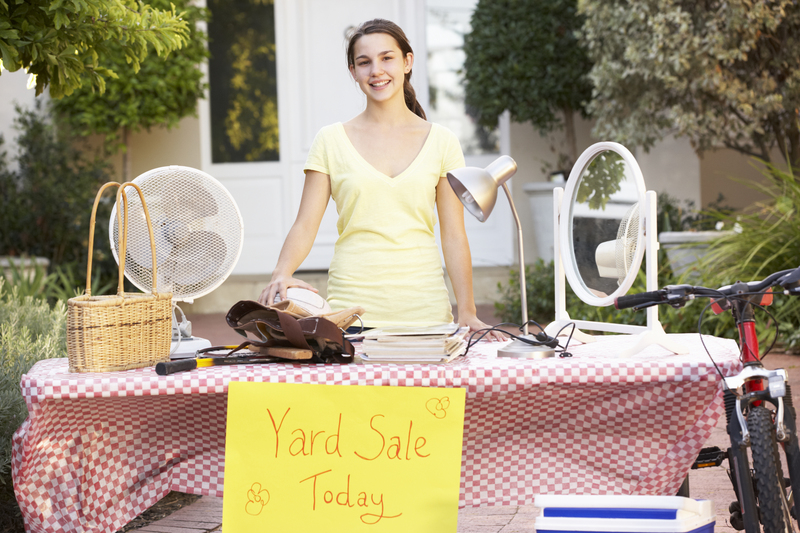From Waste to Resource: Innovative Cardboard Disposal Approaches
In the modern age of sustainability, the transformation of waste into valuable resources has become a priority for businesses, communities, and individuals. Among the most pervasive materials encountered in daily life is cardboard. Most commonly associated with packaging and shipping, this humble material possesses a massive untapped potential when approached through innovative cardboard disposal strategies.
This comprehensive article will guide you through the latest methods, technologies, and best practices for transforming cardboard waste into a resource, promoting environmental health and supporting the circular economy.

Understanding the Cardboard Challenge
Cardboard, in its many forms--corrugated boxes, cartons, packaging trays--dominates the waste streams of homes and businesses alike. According to industry statistics, over 400 million tons of cardboard are produced globally every year, and nearly 40% of all industrial packaging relies on this versatile material.
- Accessibility: Cardboard is found in virtually all consumer goods deliveries, making it readily available for disposal or recycling.
- Volume: Its lightweight yet bulky nature means it quickly fills up waste bins, adding to collection and landfill pressures.
- Environmental impact: When landfilled, cardboard waste produces methane and requires significant space, but when recycled or reused, it saves resources and energy.
Why Traditional Cardboard Disposal Falls Short
For decades, the primary cardboard disposal method has involved collection by waste management services and, ideally, recycling. However, several significant challenges persist:
- Contamination: Food stains, tapes, and plastics often render the cardboard unrecyclable.
- Incomplete separation: In mixed recycling systems, cardboard can be missed or processed inefficiently.
- Underutilization: Not all regions have access to effective recycling infrastructure.
- Lack of awareness: Many consumers and businesses remain unaware of best practices.
To build a sustainable future, it's time to move beyond old habits and explore innovative cardboard recycling ideas, upcycling methods, and technology-driven solutions.
Innovative Cardboard Disposal Approaches
Here are the most effective modern techniques and creative routes for cardboard waste management and conversion into a valuable resource.
1. Advanced Cardboard Recycling Technologies
Technological advances have revolutionized the recycling industry. Modern plants now deploy state-of-the-art machinery to sort, process, and repurpose cardboard waste efficiently:
- Optical Sorting Systems: Automated optical sensors distinguish between cardboard and other recyclables by color and shape, increasing purity and value.
- Pulping Innovations: Efficient pulping machines use less water and energy to break down cardboard fibers, allowing repeated recycling with minimal quality loss.
- On-site Compacting: Businesses install compactors in warehouses, reducing the volume of cardboard waste and shipping costs to recycling centers.
The integration of such technologies not only maximizes material recovery but also reduces contamination and boosts recycling rates.
2. Cardboard Upcycling: Creative Reuse Models
Rather than simply recycling, upcycling involves transforming cardboard waste into new, higher-value items. Some notable approaches include:
- Furniture and Decor: Designers fashion sturdy furniture, lampshades, partitions, and home decor from layered or treated cardboard.
- Educational Tools: Schools use cardboard for cost-effective art supplies, STEM projects, and learning materials.
- Community Projects: Art installations and urban gardens incorporate repurposed cardboard for structural or artistic purposes.
*Upcycling* not only diverts waste from landfill but also sparks creativity and community engagement.
3. Composting: Turning Cardboard into Nutrient-rich Soil
Did you know that certain types of cardboard can be composted? Untreated, uncoated cardboard breaks down into organic matter, providing valuable carbon for garden compost piles.
- Shredding the cardboard accelerates decomposition and blends it well with other compostables.
- Mix with nitrogen-rich 'green' materials (like food scraps) to balance the carbon-nitrogen ratio.
- Composting supports soil health, reduces landfill use, and cuts methane emissions.
*Note: Remove all plastic tapes and glossy coatings before composting!*
4. Business-led Cardboard Reduction Initiatives
Many leading companies now address the issue of cardboard disposal at the source:
- Reusable Packaging: Major e-commerce platforms experiment with durable packaging that circulates multiple times among senders and recipients, slashing waste volumes.
- Supplier Take-back Schemes: Businesses collaborate with suppliers for packaging return programs, facilitating reuse or high-grade recycling.
- Smart Logistics: By optimizing package size and reducing overpackaging, companies reduce consumption of cardboard and associated disposal needs.
- Zero-Waste Commitments: Retailers and manufactures set ambitious landfill diversion targets, improving recycling and encouraging circular product lifecycles.
5. AI and Robotics in Cardboard Sorting
Artificial intelligence (AI) and robotics are driving a revolution in waste sorting and cardboard recycling. With machine learning algorithms and robotic arms, modern facilities can:
- Recognize and separate contaminated or non-recyclable cardboard in real-time.
- Increase the purity of sorted cardboard, fetching better prices for clean material streams.
- Improve safety and reduce manual labor costs.
AI-driven innovations unlock greater efficiency and reliability in the global cardboard supply chain.
6. Decentralized Community Recycling Hubs
Localized processing centers bring innovative cardboard disposal closer to consumers:
- Neighborhood collection points allow residents to conveniently drop off separated cardboard, reducing transport costs.
- Smaller-scale pulping units transform collected cardboard into useful products or raw material for local crafts.
- Education programs boost participation and knowledge about responsible disposal.
Such community-driven approaches foster environmental stewardship and create local green jobs.
Best Practices for Sustainable Cardboard Disposal
Here are some actionable tips for individuals, businesses, and organizations that wish to sustainably manage their cardboard waste:
- Flatten boxes before recycling to save space and facilitate processing.
- Remove all non-paper materials (plastic, foam, packing peanuts, staples, tape) to avoid contamination.
- Keep cardboard dry; wet cardboard often cannot be recycled and ends up landfilled.
- Educate employees, family, or community members about proper separation behaviors.
- Seek out recycling drop-off sites and support local initiatives.
- Explore reuse and upcycling opportunities before discarding.
Future Outlook: The Circular Economy and Cardboard
The future of cardboard waste management lies in its integration within a circular economy--where products and materials are reused, recycled, and repurposed for as long as possible.
- Innovative packaging design will reduce resource use, facilitate easier disposal, and support multiple cycles of recovery.
- Increased corporate responsibility means manufacturers will invest in sustainable sourcing and end-of-life solutions.
- Smart waste tracking with blockchain and IoT technology will transparently monitor cardboard from source to rebirth as new product.
As cities and governments set stricter targets for landfill diversion and carbon emissions reduction, innovative cardboard disposal methods will be key to meeting these sustainability goals.
Case Studies: Success in Cardboard Resource Recovery
Amazon's Cardboard Recycling Ecosystem
As one of the world's largest e-retailers, Amazon has invested in closed-loop recycling facilities for cardboard packaging. They incentivize their supply chain partners to adopt minimal packaging and encourage customers to return used boxes at designated drop-off points. The recovered fiber is turned into new packaging material, closing the loop on resource use.
Local Government Innovations: San Francisco
San Francisco's Zero Waste initiative includes rigorous cardboard recycling requirements and business partnerships. The city's waste management company, Recology, operates advanced material recovery facilities, using automation and public education campaigns to achieve an impressive 80% landfill diversion rate, with cardboard being a significant contributor.
Creative Startups: Cardboard Upcycling for Social Good
Enterprising startups in Europe and Asia have launched projects supplying schools and refugee camps with upcycled cardboard furniture and shelters. Not only do these solutions utilize waste material, but they also empower marginalized communities with affordable, easy-to-assemble products.

Conclusion: Embracing the Cardboard Revolution
The shift from viewing cardboard as mere waste to recognizing its value as a resource is fundamental to 21st-century sustainability. Through innovative cardboard disposal approaches--from advanced recycling technology and creative upcycling to composting, AI sorting, and community-driven programs--everyone can play a part in building a cleaner world.
With collective action and the adoption of cutting-edge methods, cardboard can be eternally reborn, supporting jobs, reducing environmental pressure, and helping us move closer to a truly circular economy.
Let's rethink, reduce, reuse, and recycle--transforming every cardboard box from a source of waste into a vital resource for the future.
Frequently Asked Questions About Cardboard Disposal
- What types of cardboard can be recycled?
Most clean, dry corrugated and paperboard cardboards are accepted. Coated and food-soiled types should be composted or disposed of as directed by your local facility. - How can I tell if my cardboard is compostable?
If it's plain, uncoated, and free of ink or glue, it can be shredded and added to compost piles. - What happens to cardboard after it is recycled?
It's pulped, cleaned, and re-formed into new cardboard products or paper items, reducing the demand for virgin wood pulp. - Are there any new innovations being developed?
Yes! AI-powered sorting, advanced chemical recycling, and pilot programs for upcycled cardboard products are being scaled globally.
For more information on innovative cardboard disposal approaches, contact your local recycling authority or explore sustainability education resources online.